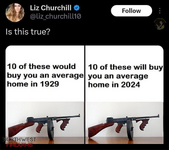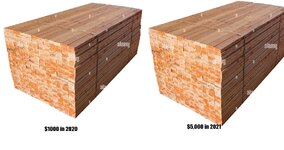Silver Lifetime
Bronze Lifetime
- Messages
- 2,178
- Reactions
- 5,359
Yes, if supply is restricted on a desirable item price will go up. My point was that comparing an artificially created price to one that isn't is not a valid comparison. The meme is comparing apples to oranges (if you assume the guns are FA examples).The effect is the same though, regardless of the cause.

















